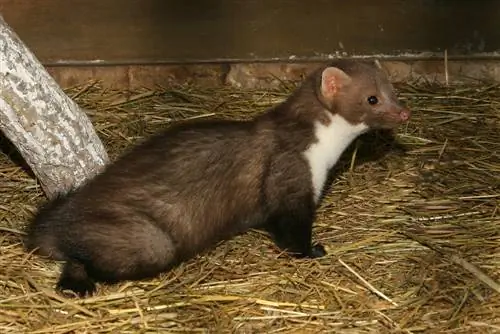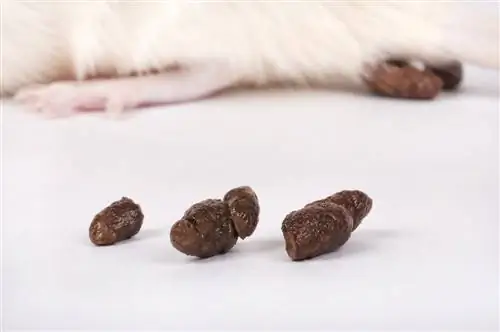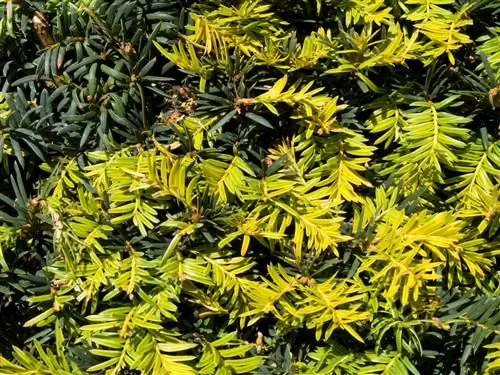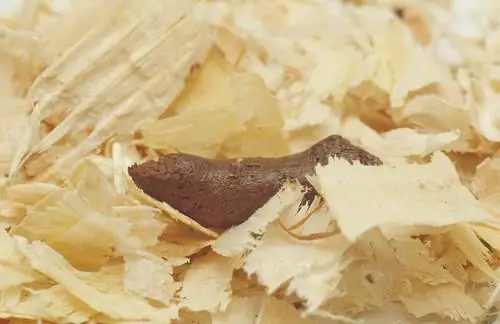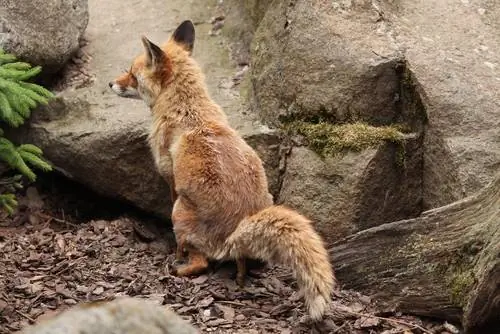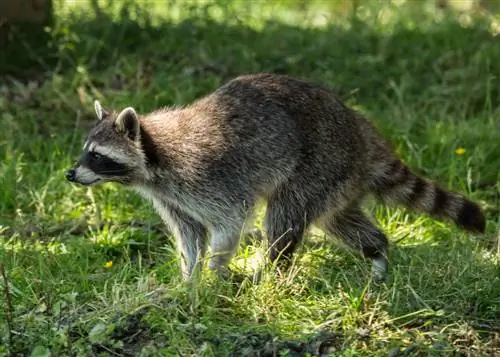- Author admin [email protected].
- Public 2023-12-16 16:46.
- Last modified 2025-06-01 06:02.
Martens are very shy animals that have adapted to a life in the dark. The climbing artists look for undisturbed hiding places and settle in the garden or even in the attic. The droppings are a clear indication of a marten territory.
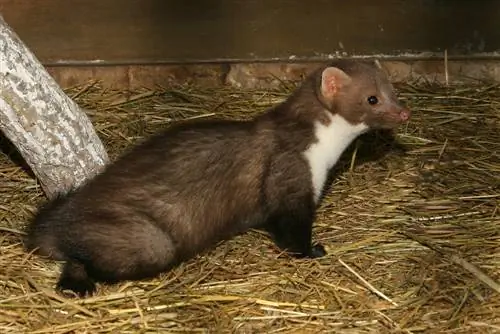
What does marten droppings look like?
Marten droppings are sausage-shaped and about 1.5 centimeters thick. You can recognize the droppings by their spiral shape and the pointed ends. Indigestible remains can often be seen in the feces, such as fruit seeds, feathers or fur.
What does marten droppings look like?
Marten droppings images offer a good opportunity to clearly identify the animals' remains. If you are unsure who the culprit is, take photos of the feces and compare them with the typical characteristics of different types of feces. There are not many animals whose remains are similar to those of the marten.
Tips for usable images:
- Scale bar: Ballpoint pen, ruler or lens cap are used for later size assessment
- Light: natural white balance and neutral daylight ensure lifelike coloring
- Details: Record details such as consistency and toilet space
Marten droppings - appearance
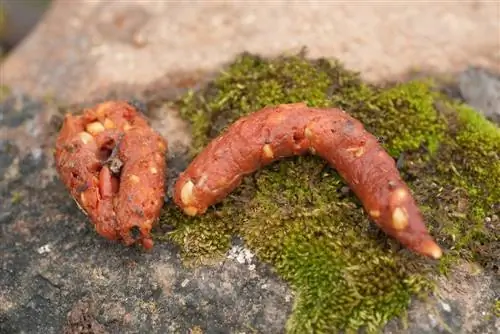
Indigestible remains can be seen in marten droppings
Martens leave behind sausage-shaped droppings that are about 1.5 centimeters thick and eight to ten centimeters long. The slightly spiral shape and the tapered ends are typical. Indigestible remains of its prey are often found in the feces. This can be fur, fruit seeds or feathers. Marten excrement smells unpleasant and very intense.
This is what the marten toilet looks like:
- often only one toilet space is used
- older and younger traces of feces in one place
- If this place is cleaned, martens will look for a new place
Marten droppings or cat droppings?
The marten's remains are very similar to cat feces in various aspects. There are hardly any differences in appearance, size and color. The feces of both animals give off an odor that is unpleasant to humans. However, martens and cats have different methods of defecating.
| Cat | Marten | |
|---|---|---|
| color | deep brown | dark brown to black |
| Features | contains no indigestible residues | often with leftover fur, seeds or feathers |
| Toilet area | soft or sandy soil, feces are buried | a fixed location |
Properties of hedgehog poop
Hedgehogs spread their droppings over a larger area. If there is foliage available, they prefer to lay their piles in it. The sausages, which are about three to four centimeters long and one centimeter thick, are shaped like a roller and are pointed at the end. Hedgehog droppings appear black and are very shiny. You can often discover food residues in the feces. These are indigestible insect shells, seeds or feathers.
How to recognize rat droppings
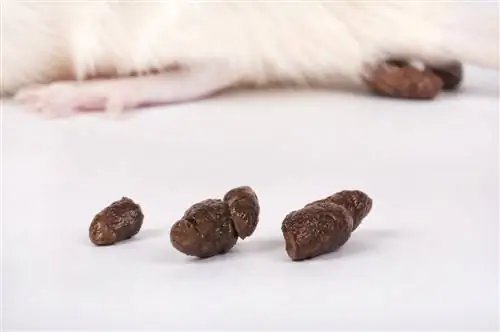
Rat droppings are smaller and often darker than marten droppings
Depending on the species, rat feces can be between one and 30 centimeters long. In Germany you will mainly find brown rats and black rats. The black rat droppings are about one to two centimeters long and consist of narrow, elongated sausages that are slightly curved. When fresh it is brown and shiny. Older remains are dry and black in color. Rats do not use a fixed place to defecate. Therefore, their legacies are often spread over a large area.
Leaves of the brown rat:
- Feces distributed in heaps over the area
- dark brown to black
- two to three centimeters long
What does raccoon poop look like?
Raccoon waste is easily confused with dog feces. The piles consist of short, sausage-like pieces and give off a pungent smell. The feces often contain remains such as hair from mice or other mammals. The excrement is preferably deposited in elevated recesses because raccoons are considered to be extremely clean.
Is marten droppings dangerous?
Basically, marten droppings are not dangerous. The remains contain various germs and bacteria that occur in all types of feces and can be harmful to he alth. If the animal is sick, contact may well lead to infection.
Toxoplasmosis from marten feces?
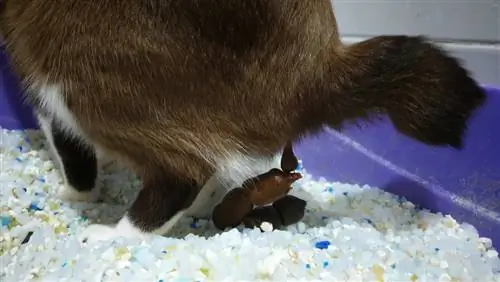
Toxoplasmosis is primarily transmitted through cat feces
There is no evidence that martens can transmit toxoplasmosis to humans through their feces. The main host responsible for the infectious disease is the cat. This excretes the pathogen in the feces, which multiplies in various intermediate hosts and triggers various symptoms. Vertebrates such as birds or rodents can be considered as intermediate hosts.
Background
What is toxoplasmosis?
Toxoplasmosis is caused by the protozoan parasite Toxoplasma gondii. It arises in intermediate hosts through smear infections with cat feces, which can occur through gardening or eating unwashed vegetables. Meat can also be a source of infection if the slaughtered animals eat food contaminated with cat feces. Around half of the population in Germany will experience toxoplasmosis in their lifetime. In he althy children and adults, the disease progresses without symptoms and heals on its own.
Hantavirus through marten droppings?
Hantaviruses are widespread worldwide. In Germany, the pathogens are transmitted to humans through the feces of infected rodents such as mice and rats. Bank voles and fire voles are among the main hosts. The viruses can be picked up through the dust of dried feces. Martens are not typical hosts of hantaviruses, which is why their feces are not a source of infection.
worm diseases
Martens can be hosts for various worm parasites. The parasites found so far in stone martens belong to the genus Capillaria. These hairworms attack the internal organs of the primary host. So far there is no evidence that fox tapeworms can be transmitted via marten feces.
Marten droppings in the garden
Finding marten droppings on your doorstep or on your lawn is an unpleasant and frightening experience for many people. Feces on the terrace or balcony are a sure sign that a marten has nested in the area. If his territory is in the house, there can be noise nuisances, especially at night.
Typical marten:
- lives near water
- retreats to his hiding place during the day
- becomes active at night and moves along the ground to look for food
- can climb well
- doesn't dig any burrows himself, but uses existing hiding places and structures
Marten droppings in the house
It is not uncommon to find marten droppings in the attic. The population density of animals is particularly high in rural regions. In agricultural buildings and dark attics they find optimal opportunities to give birth to their offspring in a protected manner. After birth, they are cared for by their mother until they are driven out of their own territory in the fall. The young martens roam around and try to settle in the neighboring buildings.

Marten in the car
Beech martens are not after cables, insulation material and hoses in the car. As is often assumed, they are not attracted by the residual heat of the engine. Rather, the animals try to defend their territory. If a marten detects scent markings or the smell of feces from a member of its species that is in the engine compartment or under the car, it becomes aggressive.
Only the second marten, which has noticed the smell of the rival that appeared first, damages the car as an expression of territorial defense. He bites the marked car parts and deposits more feces there. This behavior is increasingly observed during the mating season.
Engine compartment means living space:
- ideal hiding place to relax
- Retreat from enemies
- Pantry for leftover food
What to do if?
Marten droppings can appear anywhere in the garden, because the stone marten is considered a cultural follower and colonizes habitats close to humans. This behavior is not always met with goodwill. In most cases there is no need to worry as the mammals' remains hardly cause any problems.
Marten droppings are annoying but in most cases no more dangerous than the droppings of other mammals.
Marten defecated on the car
As long as the feces are still fresh, you can remove them with a spray bottle. Hardened feces can be softened with a mixture of water and a little vinegar and carefully scraped off with a blunt object.
If the feces have burned into the paint, polishing and subsequent sealing will help. A thorough cleaning of the car is necessary so that the marten does not mark its territory again. Devices made of wood and fine-meshed wire around the car ensure that the marten does not get onto the roof.
Funging damage in the engine compartment

Cars offer martens an ideal retreat and food!
It doesn't help much if you move the car marked by scent marks to another place. This will attract more martens, which are territorial in the area, and risk damage. Give your car a thorough cleaning to remove all traces of scent from the engine compartment. Parking areas or garages should also be thoroughly cleaned.
Protection from martens:
- Install electronic marten defense in the engine compartment
- Slide wooden frame with close-meshed wire mesh under the engine compartment after parking
- After cleaning, spray the engine compartment regularly with marten deterrent spray
Baby ate marten droppings
In most cases, you don't have to worry if your child has eaten marten droppings. This is considered harmless. Because of the germs found in marten feces, the baby can get diarrhea. In the worst case, your offspring will be affected by a worm disease, which is why you should keep an eye on the child's stool. However, the risk of infection is extremely low if small amounts of feces are swallowed.
Dog eats marten droppings
Eating feces is typical for many dogs and indicates a disturbed intestinal flora. The dog notices early on that the microflora in the intestine is no longer in balance. By eating the feces of other animals, he trains his intestinal defense systems. It absorbs pathogens and worms, so the immune system has to become active. If your dog eats marten feces, he can get diarrhea or vomiting and become infected with worms. To stop eating poop, you need to identify possible triggers for this behavior:
- Pancreatic disease
- severe worm infestation
- Eating feces as an attempt to gain attention
Which martens live in the garden?

Beech martens often live close to people
The stone marten is one of the true martens. This genus contains seven species distributed in Eurasia and North America. Martens prefer habitats near forests, with the stone marten being the exception and classified as a cultural follower. Two species occur in Germany.
| Beech marten | Pine Marten | |
|---|---|---|
| habitat | open area with bushes and trees, preferably close to people | Deciduous and mixed forests, occasionally large parks |
| Lifestyle | mostly ground dwellers | mostly tree dwellers |
| identifying feature | white throat patch, often forked | yellowish-brown throat patch, rounded downwards |
Cub found
Up to seven weeks of age, young animals of different species look very similar. The typical identifying features only develop with increasing age. Before initiating relief efforts, you should identify the species and determine the he alth status. He althy infants have sunny yellow and spherical stools.
Possible signs of illness:
- dark discoloration in the feces
- liquid or mushy consistency
- very watery feces
- brown to almost black diarrhea
Tip
You don't normally see marten children. If they are outside their nest, this can be an indication of orphaned young animals.
Distinguishing the stone marten from the fox
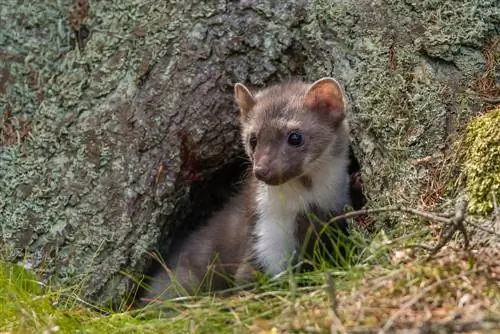
Martens have gray fur - often with white spots on the neck
Foxes have a larger head and smaller ears in relation to their body than martens. Their forehead is clearly separated from the nose area, while the marten is characterized by a smooth transition from nose to forehead. Foxes are born very hairy and have a white tail tip. Martens are climbers and have sharp claws with which they can hold on to bark. Foxes are not designed for climbing and do not have climbing feet.
Identifying stone martens and squirrels
Although these animals are not closely related, they can be confused at a very young age. Both young animals have a white bib that is more or less white in color. The main difference is the leg length. With their long legs, squirrels are reminiscent of small kangaroos. The reddish or black color of the squirrel's fur appears very early. Their feces are firm and dark brown to black.
Differences between stone and pine martens
The young animals of both species are difficult to distinguish for the layperson. Pay attention to the habitat in which you find the young animal. Pine martens avoid human habitations. If you spot a nest in the attic or garden shed, it is most likely a stone marten.
Suitable nesting locations for martens:
- abandoned bird nests
- quiet and protected places
- Holes in old tree stumps
Young pine martens can be recognized by their chocolate noses. Stone martens have a lighter nose. The soles of her feet are hairless. The bodies of stone martens are slightly shorter and heavier than those of pine martens. This feature can only be recognized in direct comparison and may be indistinct in the juvenile stage.
Tip
You can contact the Marten Aid Network for identification if you are unsure.
First Aid

Baby martens should not be fed cow's milk
Infants depend on their mother's protection and should not be taken in carelessly. If it is clear that the animal needs help, you should warm it and protect it from dehydration. Handle the young animal carefully, as moving to a new environment is stressful. Strong changes in temperature cause circulatory problems, which is why you should place the baby in a box lined with cloths in a warm room. Later you can place a wrapped hot water bottle under the animal.
Emergency recipe:
- Brew a tea bag each of chamomile and fennel
- because of the suspended matter, prepare a second infusion and let it steep for three minutes
- Sweet 100 ml tea with half a teaspoon of organic beekeeper's honey
- administer body-warm tea in two to three meals
After the young animal has received enough fluids, it must be provided with special rearing milk. Cow's milk or milk for cats is not suitable for feeding marten babies. It leads to diarrhea and, in the worst case, death. Martens can quickly imprint themselves on humans, which is why sensitivity is required. Find a wildlife rescue center in the next 24 hours. You can also contact NABU to find addresses near you.
Frequently asked questions
Do martens attack people?
Martens are shy animals that avoid being close to people. If they have to defend their offspring or are cornered, an attack can occur. They have extremely sharp teeth and can bite forcefully. A marten bite can be painful and bleed.
What does the feces of he althy martens look like?
Juveniles leave behind sunny yellow and misshapen pellets in the first few weeks when they are suckled with milk. The feces turn brown and take on a molded consistency when the animals are fed solid food. Adult animals are considered omnivores. Indigestible remains such as feathers, bones or seeds can often be seen in their solutions. The sausages are spiral shaped and tapered at the ends. A fixed toilet place is typical for martens.
Why do martens leave traces of feces and urine?
The animals are territorial and occupy a fixed territory. To protect this against rivals, martens mark their territory. To do this, they use a secretion produced by anal glands. If a competitor invades their own territory, the martens notice this offense because of the unknown scent marks. They begin to leave more feces and urine in these areas. This means that you may find traces of feces and urine in the engine compartment or under the car.
Why is there more car damage caused by martens in spring and autumn?
The mating season of martens extends throughout spring. During this time there are more fights between males wanting to mate. If an animal finds traces of a competitor in its own territory, it tries to eliminate and cover up the scent traces. Ignition and ABS cables or coolant and brake hoses are often damaged. This damage also occurs more frequently in autumn, because then the young animals born in spring look for their own territory.

